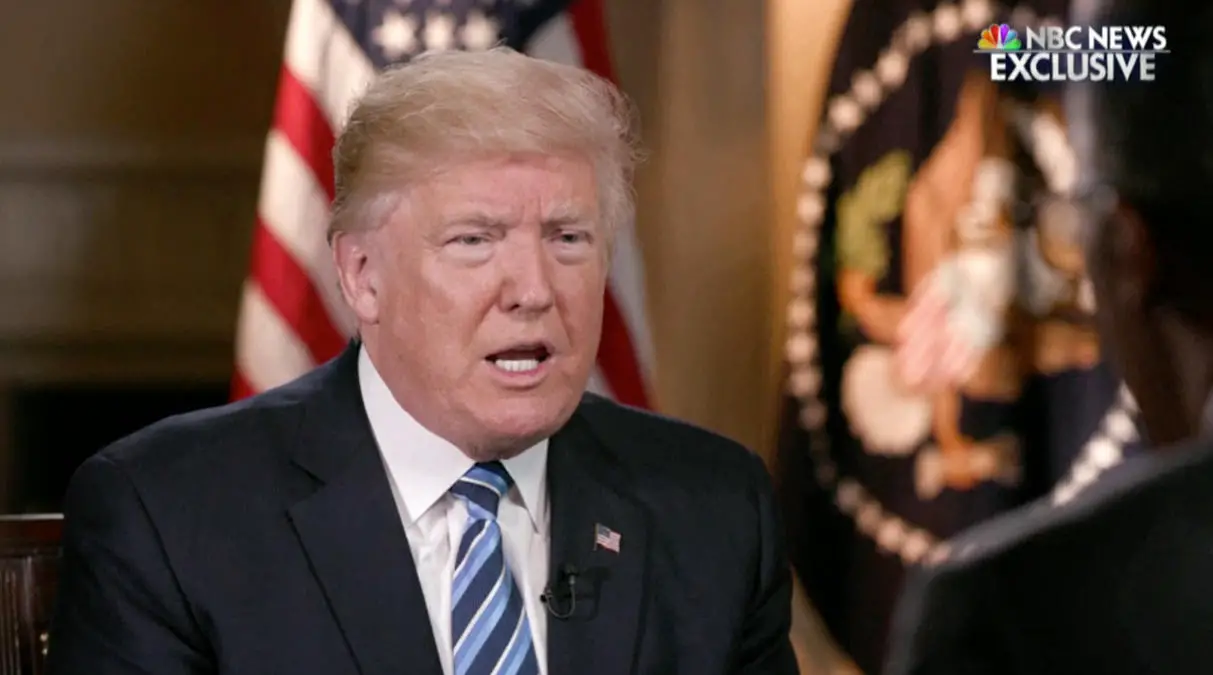Day by day, we’re learning more about the seeming disconnect between the explanations offered by the White House communications team, an the explanations offered from the President himself. There seemingly is no good explanation for why administration officials are saying Comey was fired based on a recommendation by Rod Rosenstein, the Deputy Attorney General, and then Trump is saying he made the decision weeks ago and it had nothing to do with that.
A comment from one of our readers, UpIsDown, summed it up succinctly:
Kelly-Anne on CNN yesterday: “Trump did not ask Comey if he was under investigation.”
Trump today: “I asked Comey if I was under investigation.
Kelly-Anne yesterday: “Trump acted on the recommendation from Sessions and Rosenstein.”
Trump today: “I did not act on the recommendation from Sessions and Rosenstein.”
The President sent some tweets addressing the disconnect. His basic answer was, “we’re busy”
https://twitter.com/realDonaldTrump/status/863000553265270786
https://twitter.com/realDonaldTrump/status/863002719400976384
In other words, if we give a press briefing, say “Thank You” and go on your merry way or we’ll just start passing out pop quizzes with multiple choice options and you can guess the official response of the administration.
The Washington Post tried to assemble the variations in the story all week:
[Tuesday:] The original explanation from Trump and his White House was that Deputy Attorney General Rod J. Rosenstein and Attorney General Jeff Sessions initiated Comey’s firing. In a letter to Sessions, Rosenstein criticized Comey’s handling of the FBI’s investigation into Hillary Clinton’s private email server use as secretary of state. He did not explicitly call for his dismissal. [Wednesday:] The next day, White House spokeswoman Sarah Huckabee Sanders revealed Trump actually asked for the recommendation of Rosenstein and Sessions. Trump had been losing confidence in Comey for months and had been considering firing him since Election Day, she said: “But he did have a conversation with the deputy attorney general on Monday where they had come to him to express their concerns. The president asked that they put those concerns and their recommendation in writing, which is the letter that you guys have received.” … [Thursday #1:] The president then contradicted his staff’s earlier comments. In a preview video clip of his interview with NBC News, Trump said he planned to fire Comey all along, regardless of Department of Justice recommendations … [Thursday #2]: Later on Thursday, NBC aired its full interview with Trump. In it, Trump offered yet another reason for firing Comey: The FBI’s investigation into Russia’s interference in the 2016 presidential election. (Sanders had hinted at this earlier in the day, saying the White House believed that by removing Comey, it took steps to make sure the FBI’s Russia investigation would “come to its conclusion with integrity.”)
I don’t think the blame here lies entirely with the White House communications team. I sincerely think that Trump often acts without actually consulting that team, which leaves them playing darts in the dark on matters of utmost importance. What it appears to me is that the communications team comes up with a strategy and delivers it. Then the President sees that strategy being attacked/ridiculed by the media so he unilaterally decides to change it, which makes the entire narrative look suspect.
Amazingly, this strategy often works only because Trump has an uncanny ability to drive the media narrative or completely change the narrative by creating some other kind of “breaking news.” In other words, this “Comey thing” has gone on long enough, I expect Trump to announce something entirely different soon and give the press a new squirrel to chase around the backyard. North Korea, I’m looking in your direction.
Donate Now to Support Election Central
- Help defend independent journalism
- Directly support this website and our efforts
